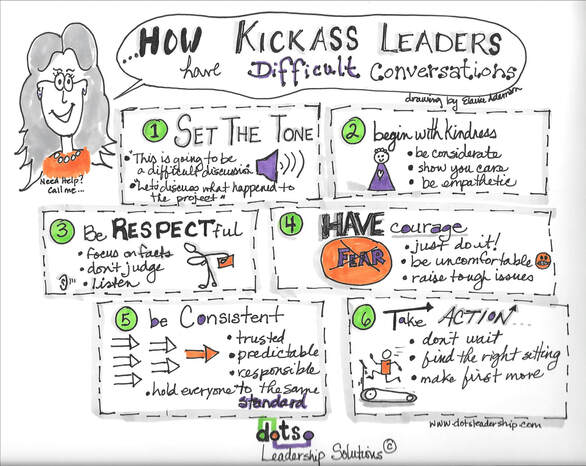How To Get A PromotionEver wonder how your company’s President or senior decision makers decide on who to promote? Well, I’m going to reveal it to you today.
...It doesn’t have anything to do with how many additional hours you put in. ...It has no relation to how many lunch breaks you skip. ...And your late night email response rate has absolutely no bearing on the decision. It’s all about HOW you show up! Senior executive leaders are listening carefully to those reporting to them and are observing who gets acknowledged most frequently – and yes, HR partners are also providing them with insights regarding HOW people situations have been dealt with. Senior Execs are always on the lookout for future leaders who can make a positive impact. Of course the unique keys to being promotable may differ slightly from one organization to the next, but there are many elements that senior teams everywhere look at to determine who stands out above the rest. So, how do you get noticed in a sea of people? Let me share a few HR secrets for how to demonstrate YOU are the one to watch:
0 Comments
How To Have Difficult ConversationsI was delighted when Kim Scott's book Radical Candor came out as I heartily share her views on candid conversations. To me it really is an art, not a science! Just like art, you improved the more often you do it. While there may be steps to take, you only develop comfort for 'uncomfortable discourse' as you practice doing it. I'm not telling you it will be easy. After all, it does go against with what your Momma taught you - 'if you don’t have anything nice to say, don’t say anything at all'. But when you become a leader (just as Kim says) ' it’s your job to speak up--so it's your obligation to be candid'. Getting Tough Feedback Can HurtI will never forget the first time I received tough feedback at work because lets face it, who can forget the moment when the are completely blindsided!
I was managing a government-funded employment centre at the time. While working on a tight deadline to implement a new computer system, I received quite a shock when the Director called me to come to her office ASAP. She told me my peer (Margaret, who I worked with every day) had raised a concern that needed to be addressed immediately. Margaret felt ‘intimidated’ by me and I made her... uncomfortable. Instantly I became defensive – WTF?! Why didn’t she talk to me, what did I do, where was this coming from? Me, are you kidding me… intimidating? I get it! Difficult people on your team can zap your energy ‘getting on your nerves,’ making it a pain to work with them. Well guess what, I’m here to tell you that pretty much every difficult person you will ever lead, can be a great asset; you may even find them not so difficult after all! This series has been dedicated to helping you figure out how to tap into hidden potential of difficult types and minimize the frustration: - Part one when you’re challenged with a “The Know All” (TKA) - Part two for the blow it up Revolutionary type (TNT) or - Part three the Take No Prisoners (TNP) personality type To wrap up the series, I’m going to help you with one seldom discussed, often misunderstood and a very draining style to work with… the Constant Critic (TCC)! You know this type; they tend to be appear very negative. Just like Eeyore (from Winnie the Pooh) who constantly points out the negative in every move. They don’t cause big drama but they do seem reluctant to get onboard with anything new, usually based on some prior experience. The Constant Critic profile:
Meet Pete – “Mr. Quiet Dissonance” Pete (name changed) has an accounting background and works as a Director, Strategic Planning & Performance for a large Retailer. He's been an executive for 5 years but has been with the company for over 20. The 3 people who report to him quite enjoy working with him. He reports to Marnie (not her real name), VP Business Performance who was recently promoted. Marnie and I have been working together on improving her direct team’s collaboration and she asked for help with Pete, in particular. Pete is commonly referred to as the ‘company historian’ and has lived through a couple of mergers, several name changes as well as take over from a US-based company. Marnie was forewarned that Pete seemed disengaged before she took on the team.
Pete is a great example of the Constant Critic personality type! The good news is Pete responded positively to Marnie as soon as she began implementing strategies we spoke about. Her action plan included:
At this point, her focus is on developing more of a trusted relationship, and that maybe all it takes. Marnie's increased interest in his experience seems to have had a positive impact already; the team has noticed Pete becoming more participatory – no more crossed arms in meetings and some have even commented about him being more sociable. The benefit of having a TCC on your team – great devils advocate, can help you develop persuasive arguments, often sees a different perspective and helps to reflect on pending plans. Often they have learned from past mistakes, can be a historian with very helpful information to draw upon. The key to leading a TCC – remain positive, redirect negativity, stick to facts and data that support positive outcomes. Help them see the impact of their behaviour on others if it becomes a problem. Ask the TCC to reframe their initial reaction toward a more positive response. Caution leading a TCC – do not get pulled into negativity. Limit how much time you give when they become negative. For every difficult type of person, there is a way of changing YOUR perspective about what contribution they bring to your team. It may take a little effort, but drawing upon unique perspectives can be a competitive edge for your team. If you are dealing with a difficult person on your team (or even your boss) and you’d like help to figure out how to communicate better with them, send me an email. There are just as many strategies as there are difficult personality types! Bonus tip: Can you see a bit of yourself in Pete? Have you been 'shutting down' at work, avoiding colleagues or find yourself to be increasingly contrary? You may be a Constant Critic or are heading that way. Time to reflect on how negative you may appear to others:
Photo CC0 @bkotynski Unsplash
Recently, a client (we’ll call her Yvonne) reached out to me for assistance with a ‘know-all’ on her team. We had such great success improving their working relationship and camaraderie on the team that I decided to pass along some tips!
Many business leaders I talk to grapple with rebels or difficult personality types. Difficult people can test your every-last-nerve, yet once you figure out how to curb their behaviour by communicating effectively, you may discover a competitive advantage on your team. Over the next few blogs, I will give you tips on how to handle some of the most draining types of people:
First up is the case of Alan – The Know All (TKA) Alan – The Know All (TKA) Alan was an effervescent, spirited, high-energy team member, who was very smart. He drove people crazy with his need to be right all the time and his non-verbal, superior behaviour in meetings (like eye-rolling, arms crossed, dismissive noises). Trouble was that most days Yvonne found herself doing damage control when people complained Alan was difficult to work with. Alan spent all of their 1:1 meetings complaining about others who were unresponsive or uncooperative, inhibiting him from accomplishing his work and expecting Yvonne to set THEM right. As a result, Yvonne found Alan to be a drain on her time and energy. Due to the culminating behaviour issues, Yvonne seriously questioned whether to keep him on the team despite the great work that Alan did. After Yvonne filled me in on the many issues, it became obvious that Alan did not build rapport with others and his smug behaviour rubbed people the wrong way. So we set out a plan for Yvonne to begin providing Alan with meaningful and actionable feedback, immediately. Alan fell into the TKA-The Know All profile: The Know All profile (exhibits many of these traits)
The key to leading a TKA is to gain trust by showing them you are ‘in their corner’ but challenging them directly on their behaviour so they can see the impact of their current approach.
Caution to leading a TKA – always have your facts and data in order, never threaten or corner. Pick your battles wisely; focus on behaviour that gets in their way of success vs. labeling the person as a problem. The benefit to having a TKA on your team – this type of person has tons of relevant information to draw upon, they are hard workers, creative problem solvers, decisive, action-oriented, have high standards, are adaptive, and are highly productive. The root of Alan’s problems was that he made others feel dumb or undervalued – the more he touted his smarts, the more others did not want to work with him. They resented his approach because he never took time to value their input, he didn't create a relationship, he would talk too fast, not ask questions and express how frustrated he was in a variety of verbal and non-verbal cues. So What Happened? Once Yvonne began providing more directive feedback, Alan started making positive changes in his approach. Fortunately Alan knew Yvonne genuinely cared about his success and even though it was difficult to hear, he soon realized he came on too strong and decided to take her advice. In a few short weeks, Yvonne began to hear from others that Alan was less combative and appeared more team oriented and helpful. Yvonne is now less stressed and has improved her own skills for giving AND receiving feedback. So Difficult People or Competitive Edge? For every difficult type of person, there are ways to connect to capitalize on the strengths they bring while correcting undesirable behaviour. It can take a bit of work on your behalf but building and encouraging diverse perspectives can be a competitive edge for a high performing team! If you are tired of struggling to deal with a difficult person on your team (or even your boss) and you’d like to know how to better communicate with them, send me an email. I have many more strategies that work! Do you know anyone similar to Alan? I'd be interested to hear what strategies work for you to manage their behaviour or if you have another difficult style you struggle with - please leave me a reply below! Sign up for my blog updates (subscribe in the right-hand column) or bookmark the blog page. The next post one will feature: TNT – The Blow It Up Type – think of a ‘Mike Holmes’ like worker who sees many things that need fixing and thrives on change yet balks at routine work. Photo Credit @ergepic from Pexels Creative Commons CC0 Hanging out with my grandson the other day he told me about a neighbourhood bully who makes ‘bad choices’. We had a great conversation about people who make bad choices, particularly bullies. In his vast wisdom of nearly 5 years, my grandson told me ‘Bullies are people too but its not OK when they hurt other people and if they do, then a grown up has to give them a time-out.’ What a thoughtful leadership lesson in this little statement. After all, we use time-outs with children to make them think about their actions, they must apologize and we expect them to do differently so they learn from their experience. So why don’t we tackle bullies in the workplace with the same energy - especially people in a power position over others? What Would You Do? You know the headlines these days are dominated by allegations of sexual harassment; victims are speaking out about their nasty experiences, almost daily - a topic seldom talked about before. Women everywhere have been emboldened to speak up and share their personal stories of sexual harassment and inappropriate behaviour in work situations. With every news story, it triggers another woman's courage to speak out. Rest assured, there will be more to come. Will you know how to manage an allegation at work if someone in your company or organization turns to you for help? Policy and Practices Start with YOU, not HR! Lets face it; dialogue about sexual harassment makes most of us uncomfortable. Anything ugly is difficult to speak about, but open discussion is vital to bring about improvement. It really concerned me when I read the Globe & Mail article that '94 percent of Canadian's leaders believe sexual harassment isn't an issue.' Given harassment has become such a hot topic, every company should recognize that sexual harassment IS a real problem. It is time for leaders, or anyone in a position to help, to stand up, call out and follow through with discipline for inappropriate behaviour. No one should ever feel harassed at work, particularly if it is unwanted and sexualized in nature. It’s just not ok, regardless of how you qualify or explain it away as ‘that is how it is here’. Turning a blind eye to anyone’s harassment claim can make worldwide headlines within a few hours through social media when they don’t get the help they need. So #Time's Up on covering up transgressions of anyone, especially senior level leaders or officials. This is tough stuff to handle but there are steps you can take, immediately, to prevent all forms of harassment from happening at your work. Lets look at how you can create work environments where both men and women feel safe to bring forward concerns and get support rather than feeling they have to go public or leave the company. Think ‘METALS’ - Leadership Steps to Say #Times Up 1. Model. Everyone is watching you whether you know it or not. Don’t speak inappropriately about women (or men); leave any form of sexual innuendo out of the workplace – sexual dialogue does not belong in a work environment. Help your team remain respectful in every interaction, show them how you manage with respect. You are the one your team will imitate, so show people the right way to treat others. 2. Enforce. The basis for change at work begins with having policy as a guidepost. No matter the size of your business, you need policies in place to fall back on to enforce. Ensure your workplace has a clear harassment policy in place with specific actions to take should any disrespectful behaviour occur – regardless of level or position in the company. Check to see that your company has a policy, become familiar and communicate it. If they don’t have a policy, suggest it be implemented ASAP. You can be the catalyst for ensuring a harassment policy is in place, communicated and enforced. 3. Talk. Talk about harassment with your team, long before an issue occurs. When opportunities arise to reinforce, discuss behaviour openly, highlighting what is acceptable and what is not at work. Openly share stories about past personal experiences and state how you would handle it now. Immediately discuss any sign of disrespect you observe or hear about so your team know you will not tolerate it. Make your team aware that they each have a role to play in keeping the workplace safe, people who stay silent are complicit; give them the courage to speak up. You create the environment of open dialogue. 4. Act. In the best work environments ‘respect in the workplace’ is a foundational training piece for all employees so they understand what behaviour is expected of them and what to expect in return. Many people go through training but notice when management doesn’t consistently follow through when something occurs, so they clam up. Be the one who acts swiftly. People want to work for leaders who readily step up and take responsibility for the wellbeing of their people. They will know you care enough about both the ‘bully’ and the bullied to deal with bad behaviour head on. Any form of bullying or inappropriate behaviour should be investigated and acted upon with appropriate discipline, without delay. Action begins with you, not HR. 5. Listen. Treat any form of harassment claim with urgency, seriousness and respect by hearing out those who have the courage to speak up, suspending your own judgement. Ensure a proper investigation is done while taking steps to protect the complainant from any form of retribution. Active listening shows them you care, understand and can be trusted to help. Listening with empathy is a key leadership trait. 6. Speak Up. By respectfully speaking out for those who feel harassed at work, you quickly become a powerhouse leader of tomorrow. Inappropriate behaviour at work is not OK; it is never to be tolerated. By speaking up and supporting others who speak out you will be the leader everyone wants to work for. Take a Stand You make choices everyday for how you treat others, we all do. If someone chooses to be a jerk or worse, an aggressor, then they should face appropriate consequences for their actions, regardless of their position in a company or organization. But it takes strong leadership to follow through with these people and take deliberate action. Take a stand! As a leader you have the ability to choose what your team’s workplace should be like, irrespective of the culture or industry you’re in, or whether you have an HR team. YOU can be the shining example to others in management. YOU count to the people who report to you and how you act during the toughest times will be a key differentiator to their lives. I’m here if you need guidance to manage tough leadership situations. Send me an email if you want support to develop policy or practices to enforce a respectful workplace or you’re struggling with a difficult issue and want a coach to talk it through. Creative Commons Zero (CC0) license
By now, you’ve surely read the news that Steve Bannon, the ever-controversial White House Chief Strategist was let go after just 7 months in office. He joins Anthony Scaramucci who was fired (or removed from office) after a mere 10 days on the job as White House Communications Director. The ‘Mooch’, as he liked to be referred to, was quick to show his true colours within a few short days on the job with inappropriate comments and bombastic tirades.
While the White House may have substantially different hiring/firing practices than many businesses, these departures underscore why ANY company should act fast when an employee–particularly those who hold a position of trust - damage the reputation of a business, or presents them with ‘cause’ to terminate. But did you know, you can actually fire anyone, anytime–with or without cause? Yes, let that sink in for a moment… You can fire anyone. Yes, even in Canada! BUT don’t get ahead of yourself…there can be consequences and ramifications for doing so, depending on what led to the decision and how well you managed it. If you fail to treat the employee appropriately, you could face all sorts of trouble and/or additional expense. For instance:
I’ve worked with many leaders in different industries (both big and small) to plan terminations, and in most cases they were extremely conflicted about making the final call. Let’s face it; this is not an easy thing to do. You wonder if you have enough information to back yourself up, you question if you’ve ever said or done anything inappropriate that could later ‘bite you in the butt’ and you worry about what to say on that dreaded day–the day you actually let them go. Whether it is a directive from the top of corporate to downsize your team or it is a lingering performance or behaviour issue, letting someone go is one of the hardest actions you will ever have to take as a manager. And so it should be. I always say if you don’t feel a little sick inside when affecting the life of someone else then you really shouldn’t be a people manager. That said, there are times where you know very well that somebody needs to go – and as aggravating or grueling as it may seem to be, there are some very important things you should consider before you ‘pull the trigger’. Lets call it CYOA! (cover-your-own-ass) So how do you CYOA? Long before you have that tough conversation, it’s important to consider if you’ve covered yourself properly. Have you: 1. Been fair? Do you have favourites on your team, or are there people who you don’t really like? If I spoke to others on the team, would they tell me they’ve observed a lack of fairness with this person? How did you arrive at a decision for this person to leave and how fair did you apply these selection criteria across the team? Have you let others with the same performance level or behavioural issues remain on the team or did you provide all of them with the same type of feedback and given similar chances to improve but this one individual hasn’t measured up? If I can find out you were not fair in treating this employee, you can bet the court can too! 2. Been consistent? I can’t tell you how many times I’ve heard how terrible an employee’s performance is, only to read their previous reviews–all of which were glowing. Do not assume an employee just ‘knows’ when they are not performing because you think you’ve told them. It is your responsibility as the manager to ensure the issues have been clearly expressed, both verbally and in writing with a clear-cut plan to improve. This plan becomes your supporting ‘back-me-up’ information. At the very least, be sure to document stern conversations by sending a follow up email after your meetings to reinforce what you’ve spoken about and include the steps required to improve. Now, I have a test for you… pull out all of your notes/emails or reviews to this person over the past year, and re-read them as though you’re the lawyer defending this case. Does your evidence support the termination? Have you been consistent with your feedback and directions; will this information reinforce your case? Or is it wishy-washy and non-specific? When you say one thing verbally, but record it differently in performance reviews and/or emails, the written information will be taken as the truth every. single. time! 3. Provided ample opportunity to improve? Everyone deserves to be given a chance to improve–yes, everyone! I have heard many leaders tell me somebody ‘just has to go’, but when asked, it becomes apparent no one gave the employee clear feedback with an opportunity to improve within a realistic time period. If challenged legally, you’ll have to show the proof that you gave the person helpful, specific feedback on what needed to change, and how to improve--within a reasonable timeframe. So ask yourself–did you give them adequate feedback? Did you provide clear actions they need to take within realistic time period – did you create a performance improvement plan? If not, now’s the time to do it! 4. Provided training or progressive discipline? If the issue is a ‘skill gap’ you need to show that you’ve provided the employee with adequate training to acquire the right skill level. However, if it is a behavioural/attitudinal issue, the only way to help someone change is to provide him or her with progressive discipline in a formalized way – some may call it performance coaching or corrective action. When I say formalized, I mean well-documented (notice a theme emerging?) keeping track of meeting dates, a summary of each circumstance/situation, and a record of feedback (provided to the employee) so that there’s a trail of the intensifying consequences. In formalized progressive discipline you use formal warnings, beginning with simple verbal warning to correct the behaviour, escalating the consequences according to your company discipline policy (if you don’t have one, you should create one… pronto). ‘Three strikes you’re out’ may not be necessary or on the other hand, it may not be sufficient; it really depends on the seriousness of the wrongdoing, the situation, the history of the individual and whether there were any justifying circumstances or not. Most progressive discipline practices use these culminating stages: verbal warning, formal letter of warning, suspension and then termination. It is really important you follow through with an action each and every time they act inappropriately. And again, you have to conduct yourself the same way with all employees. Tip: The test I use to know the difference between a skill gap or a behavioural issue is to ask, “If you paid them a million dollars, could they do this correctly?” If the answer is no, then it is likely a skill gap and training is required. If the answer is yes, then chances are you have a behavioural/attitudinal issue on your hands. 5. Treated them with respect? Of course, you likely know this is important while they work for you to treat them with respect, but did you know it’s equally as important after they no longer work with you? If after someone leaves an organization they can prove you were talking disrespectfully about them or their performance to someone who had no right to know, the organization may face defamation claims in addition to wrongful dismissal suit. Limit discussing negative qualities about any colleagues or team members at any time–the less said, the better! Only management/HR of the employee should be involved with these discussions. This kind of gossip can not only cause legal issues, but also trust issues with other team members, as they begin to wonder if you talk about them in the same way behind their back. The bottom line is this–you can avoid most wrongful dismissal lawsuits and/or Human Rights violations when:
It may seem onerous to have to complete performance improvement plans, provide verbal and written warnings, have performance/behaviour coaching sessions, keep desk notes and provide follow up emails, but these are your best tools to help you CYOA. It’s absolutely critical that you be in control the information that could be used against you. When you’re dealing with an employee with difficult behaviour or you’re at the end of your rope and are about to let someone go, book me for a consultation. I have tips and tools to help you get organized and I have 25+ years experience helping leaders plan and prepare for the ‘dreaded meeting’–including their follow up discussions with the rest of the team. And to help make sure you properly CYOA, I will challenge you with tough questions to help you move forward. After all, wouldn’t you rather it be me asking as opposed to the courts? |
Most Popular Posts:
AuthorElaine Adamson is a leadership consultant with Dots Leadership Solutions Inc. A natural dot connector. Passionate about coaching team effectiveness and leadership development she shares over 25+ years of real-life tips and tricks that really work! 
Elaine believes you can discover and leverage strengths to forge a strong team dynamic despite business challenges or organizational change.
She posts some great articles on Linked In too! Topics of Interest
All
Archives By Date
November 2022
|
Specialties |
Company |
|








 RSS Feed
RSS Feed